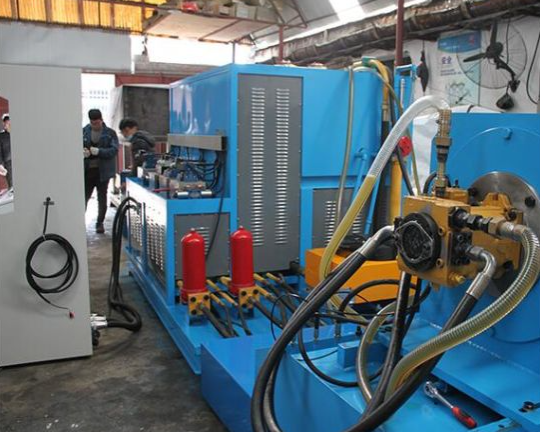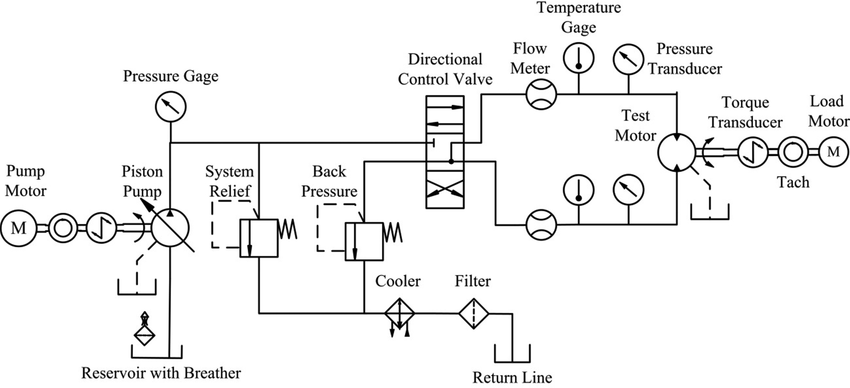Hydraulic pumps are components of many machines, including machines used in manufacturing, transportation, and agriculture. They play an important role in moving fluids and materials, and need to be able to operate reliably under a variety of conditions. In order to test a hydraulic pump, you need to understand how it works and ensures that it is functioning properly. This article provides an overview of how you can test a hydraulic pump using various methods.
Hydraulic pumps are used in a variety of industries, including agriculture, construction, mining, and manufacturing. They operate by using pressurized fluid to move objects or substances. To test a hydraulic pump, you need to first identify the problem and then determine the cause.
Hydraulic pumps are an essential piece of equipment in many industrial and construction settings. But how do you test them to make sure they’re working properly? In this article, we’ll take a look at the different ways you can test a hydraulic pump and choose the method that’s most appropriate for the situation.

How can you test a hydraulic pump?
Testing a hydraulic pump is important in order to ensure that it is working properly. There are a few different ways to test a hydraulic pump, and each has its own benefits and drawbacks.
One common way to test a hydraulic pump is to measure the output pressure. This can be done by using a pressure gauge or by measuring the flow rate through the pump. If the output pressure is within specifications, then the pump is likely functioning correctly.
If the output pressure is not within specifications, then there may be a problem with the pump. In this case, it may be necessary to replace the pump. Testing a hydraulic pump can help identify any issues before they become serious problems.

What types of tests can you perform on a hydraulic pump?
One of the most common tests performed on hydraulic pumps is a pressure test. This test simulates the conditions that a pump will see in use, such as high pressures and low flows. By measuring the pump’s pressure at different points, you can find out how well it is functioning. Another common test is a flow test. By measuring the pump’s flow at different points, you can find out how efficient it is.
One important test to check on a hydraulic pump is the pressure relief valve (PRV) function. This test verifies that the PRV is working properly and allows the pump to release excess pressure in the event of an emergency. Additionally, you can test for leaks by using a pressure gauge to measure the pressure in the system before and after pumping. Finally, you can also inspect the seals and hoses to ensure they are intact.
How long does it typically take to finish testing a hydraulic pump?
Typically, it takes a technician anywhere from one to two hours to test a hydraulic pump. During this time, they will use various equipment to check the pump’s performance and functionality.
Testing a hydraulic pump can be a time-consuming process, depending on the severity of the issue. In general, it takes between two and four hours to complete a full test sequence.

How does a hydraulic pump work?
A hydraulic pump is a machine that uses the pressure of hydraulic fluid to move objects or fluids. It is one of the most versatile machines in the world, and can be found in many different applications.
How does a hydraulic pump work?
A hydraulic pump works by using the pressure of hydraulic fluid to move objects or fluids. The fluid is pressurized by the pump, and this pressure is used to move the object or fluid. The pressure of the hydraulic fluid can be controlled using valves, which allows for precise movement.
What are the different types of hydraulic pumps?
There are many types of hydraulic pumps, but the most common are rotary and static. Rotary pumps are usually smaller and more efficient than static pumps, but they can be more expensive. Static pumps are usually cheaper and slower, but they can be more reliable.
Different types of hydraulic pumps have different purposes, so it is important to know what type of pump is being used for a specific project.
Pumps can be categorized according to their working principle:
○ Piston Pump: This pump uses pistons to move the fluid. The piston moves in a cylinder, and the pressure inside the cylinder creates a force on the piston that moves it.
○ Rotary Pump: This pump uses a rotating disk to move the fluid. The disk has small holes in it, and as the disk rotates, the fluid passes through these holes and is pushed outwards.
○ Vane Pump: This pump uses vanes to move the fluid. The vanes are made from a material that can expand and contract, and this movement causes the fluid to be pushed or pulled through the pump.
What are the basic parts of a hydraulic pump?
A hydraulic pump is a machine that uses pressure to move objects or fluids. It consists of four basic parts: the motor, the cylinder, the plunger, and the seal. The motor uses an electrical power source to create a rotational motion in the cylinder. This motion causes the plunger to move up and down, which in turn pumps the fluid.
A hydraulic pump is a device that uses hydraulic pressure to move objects or fluids. The basic parts of a hydraulic pump are the reservoir, the piston, and the cylinder.

Conclusion
If you’re wondering how to test a hydraulic pump, or if your pump is acting up, this guide will help. Testing a hydraulic pump includes checking the pressure and flow rates, as well as ensuring that the pistons are moving correctly. By following these steps, you can ensure that everything is working properly and that any issues can be addressed quickly.
How do you test a hydraulic pump. please click topkitparts see more
